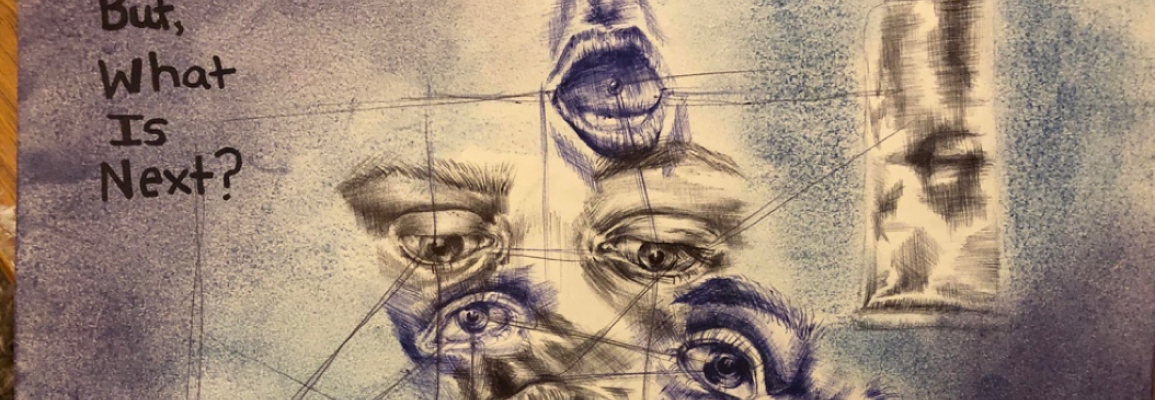Congratulations to Dr. Peaches Hash for successfully defending her dissertation and earning her Ed.D. from Appalachian’s Reich College of Education! Dr. Hash received her B.A. in English & Secondary Education in 2008, taught high school English for two years, and then returned to school and achieved an M.A. in English and Community College Teaching in 2012 from Appalachian while working as a Graduate Teaching Assistant. After getting her Masters she put five more years of teaching high school on the books, got her Ed.S. in Educational Leadership in 2016, and then finally returned to App State to earn her Doctorate of Education.
Although she has seven years of experience teaching high school English, Dr. Hash found her passion in university teaching because university-level instruction caters to a more flexible curriculum and teaching style. During her time spent working towards her Ed.S., she became interested in curriculum and instruction, and how to improve the teaching and applications of the theory learned by providing examples of theoretical implementation.
“I feel like, especially educational theory, but a lot of what you learn in teacher programs is…philosophy of the reasons people should consider doing something, but when it comes to the practical examples of how to implement it, I feel like some things fall short of that.”
Dr. Hash started with App State’s Ed.D. program in 2017 and spent the first two years as an adjunct in the English department and as a research assistant. In addition to her studies in the college of education, Dr. Hash also completed a graduate certificate in Expressive Arts, and the knowledge gained through this was invaluable to the development of her dissertation and curriculum ideas.
This past year she has been on a full-time year-long contract to teach more classes, allowing her the opportunity to draw data for her dissertation from her students. Teaching five classes in Fall 2019, both RC 1000 and RC 2001, last semester allowed her to implement her ideas on how art can enhance curriculum in the English classroom.
“I’m really passionate about arts-based learning, which is something I didn’t think I’d ever implement in a classroom, and teaching at the university level gives you that flexibility in curriculum to take time with things and allow students to pursue their interests instead of what the state is dictating.”
What started out as a mere whim to bring in some old art supplies to class turned into a grant-funded class set, a rolling art cart, and three extensive articles that comprise her dissertation. A total of 14 students from her various RC 2001 classes participated in her study, and Dr. Hash used their artwork, visual journal reflections, and 4 interviews per student to provide the data necessary to support and present her ideas. Students completed several outside the class art projects that went along with papers like literacy narratives. Dr. Hash brings in magazines, stamps, watercolors, markers, colored pencils, and other art supplies to encourage students to engage in the classroom, spur their writing, and reflect on themselves and their work.
After completing the practitioner action research, in which Hash was both the researcher and the instructor, she created a non-traditional dissertation, one comprising three separate articles. Each article looked at a different problem, respectively: a problem in composition studies, curriculum studies, and expressive arts and how to bring it into the classroom.
The first article addressed how art-making can lead to student engagement in the classroom and with the coursework. For example, by bringing in art one can shift student mindsets to believing they actually can improve their writing, and the more enjoyable activities also make the students more active participants in the learning and writing process. If the students are interested and invested in what they’re writing about, particularly as it pertains to themselves, the dedication to learning and work will increase and their writing will improve.
The second article discusses the curriculum style of Currere, Latin for “the running of the course,” and how if students learn something more relevant to themselves the activities can make the students reflect on past events in their life, process something in the present, or even decide how an aspect of their life will help them in the future. The art projects in the classroom facilitate this style of engagement and learning, as seen in Dr. Hash’s student artwork where a student revisits moments in their past or thinking about their future selves as they work through these “positionings.”
The third article in her dissertation considers the therapeutic effect that this expressive arts curriculum can have on students as integrating art-making can be an incredibly impactful experience. It allows students that are dealing with things to bring those thoughts and feelings into the classroom space, and the art gives them this way to work through and process without the instructor micromanaging them.
Dr. Hash emphasized that it was difficult to write about her students’ experiences in a more objective way, and therefore went with a narrative analysis style so that each student’s story could be heard and the positive extent of artistic expression could be demonstrated. Though finishing her dissertation in just a year was challenging, the rewards cannot be ignored.
“Getting my Ed.D. and going through this program helped me to find my positioning and my personal pedagogy as an educator and made me a much better instructor; now I know what I stand for in education, what I’m passionate about, and what I value bringing to my students.”
Once again, congratulations to Dr. Peaches Hash on achieving her Doctorate of Education. We look forward to her future contributions to the classroom, particularly in arts-based curriculum integration.


